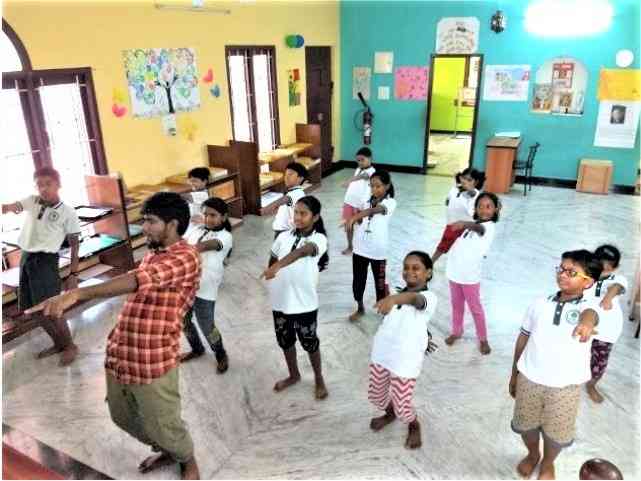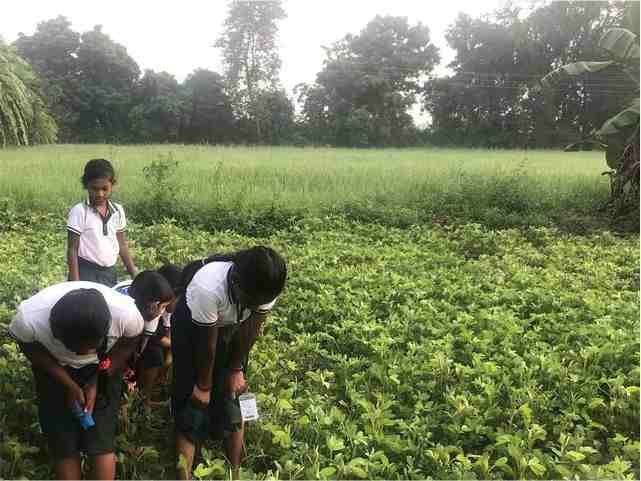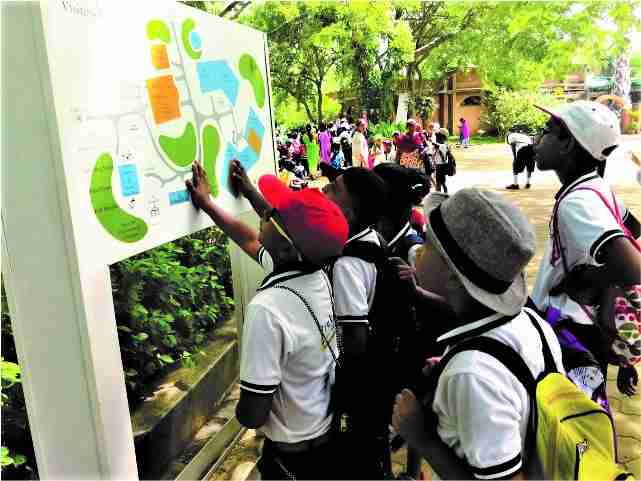Art & Excursions
Montessori Elementary Art Curriculum
Art and Music Integrated Into the Curriculum
Arts and Crafts
Art often is woven into the very work children do in language arts, science, geography or history. Lower elementary children make maps—and paint them with watercolours, or shade their elevations carefully with coloured pencils. They draw prehistoric animals on timelines of life. They paint the sabre-tooth tiger they are researching on large-scale paper, after they write down their research on the animal in their best cursive handwriting. Depending on the children’s interest, and their teachers’ own inclinations, you may see them knitting or crocheting while a teacher reads a story to a group of children. By Upper Elementary, children also get introduced to more structured art lessons. Teachers use a structured art program, developed specifically for the Montessori classroom, to introduce s tudents to a wide variety of art styles and design principles.

Music and Movement
Music in Lower Elementary is often centred around singing. Teachers may teach a variety of songs, or may even work with their class to put on short musical performances. The Montessori Tone Bar materials take the work begun in Montessori Primary with the Bells further: children can learn about scales and musical notations. By learning about rhythmic and melodic notation on a variety of instruments, interested students can learn to compose their own songs, and may even put on performances in small ensembles. Being able to not just play existing music, but create their own plays to the interests and strength of the nine- to twelve-year-old child, is a good addition to any instrument or voice lesson he or she may have outside of class.

Excursions - Classrooms without Walls
“When the child was very small it was enough to call him by name for him to turn around. Now we must appeal to his soul. To speak to him is not enough for this; it is necessary to interest him. What he learns must be interesting, must be fascinating. We must give him grandeur. …. Instruction becomes a living thing. Instead of being illustrated, it is brought to life. In a word, the outing is a new key for the intensification of instruction ordinarily given in the school. There is no description, no image in any book that is capable of replacing the sight of real trees, and all the life to be found around them, in a real forest.””
By Dr. Maria Montessori.Field Trips and Going Outs
Going beyond the school walls in their quest for learning becomes increasingly important in the elementary years. While the Primary child was content in the carefully-prepared classroom and its familiar, secure community, elementary children are eager and ready to take on the world. In our Elementary program, going beyond the school takes two forms:

Field Trips

Field trips are all-class or multi-class excursions, organized by the teacher or by the school. They may be as simple as a walk in the neighbourhood to see a flag pole or to visit a nearby fire station or as elaborate as a bus trip to a museum an hour or two away. Upper elementary children may go on overnight trips as well. These adult-led trips are a good opportunity to build the community, to deepen friendships, and to get to know the local destinations in our cities. They also often tie into subject matter the children have been studying such as looking for habitats during a stroll in the woods or on the dunes or around tide pool areas, or learning about prehistory during a museum visit.
Going Out

Going Outs are child-initiated and child-organized trips of smaller groups of children (usually two to five students), and may begin during the 3rd year of Lower Elementary or (more typically) early in the Upper Elementary three-year-cycle.
A Going Out has two purposes:
The direct purpose is bringing additional resources to a child’s study. This can be as simple as finding additional books during a trip to the library, or more elaborate, like a visit to a commercial bakery (as part of research on the provenance of food), or to an art museum (to see paintings and sculptures of a certain period or style that the children may have studied in class).
An additional purpose is enabling the child to learn life skills.Going Outs, while coached and supported by teachers, are organized and run by the students. The students research the destination, online or by calling the venue. They organize transportation—via public transport, where available, or alternatively by finding driving routes and organizing for a parent chaperone to drive them. They research costs (bus fare, admissions). They plan timelines. They even conduct a risk assessment and obtain needed approvals from the Head of School and permission slip signatures from their parents. In this way, Going Outs are part of the Practical Life curriculum for older children. Teachers prepare students for these trips by providing resources and planning tools, setting clear standards, and ensuring children know the proper etiquette for behaving on public transport, in museums or symphony halls. Teachers assess students’ readiness: only children who consistently demonstrate their maturity and responsibility e.g., by paying attention in class, by following through on assignments consistently, by treating teachers and other students respectfully, by following school rules and being trust worthy show that they are ready to handle the responsibility that comes with Going Out are permitted.
After-school enrichment programs
At our larger schools, where many students are staying on beyond the end of the academic day, paid after-school enrichment programs may be offered. These programs are tailored to the needs and interests of each school community. Examples of programs offered range from rock band to violin, from computer programming and chess to drawing, from boot camp to introductory sport.

Student organized After-school Clubs and Other Initiatives
Montessori children stand out for their initiative and can-do attitude. This was evident at one of our schools by flyers covering hallway walls! One student had started a Rubik’s cube club, which met once a week during after-school hours. Inspired by this initiative, other clubs organized by students, for studentssoon followed: geography club, comic book club, even free math tutoring offered by a junior high student to younger peers!

Get in Touch with Us
Our Headquarters are in Chennai and Puducherry
27-28, 2nd Cross
Moogambigai Nagar
Reddiarpalayam, Pondy - 605 010
Phone: +91 9994851951
Phone: +91 9361919996
Email: contact@vrukshamontessori.com
24-25, 12th Cross
Ranga Reddy Gardens
Neelankarai, Chennai - 600 041
Phone: +91 9994851951
Phone: +91 9361919996
Email: contact@vrukshamontessori.com
